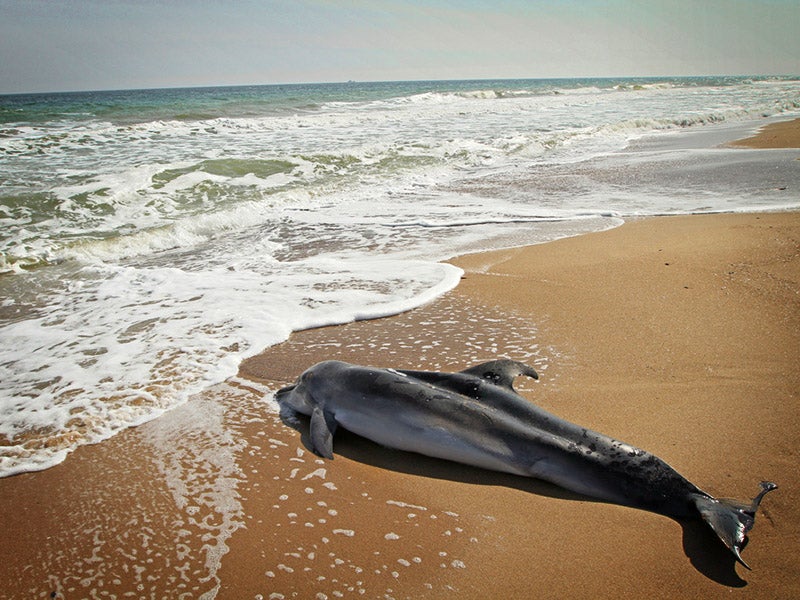New Navy Agreement Means Dolphins Won’t Die in Vain
A recent settlement agreement with the Navy ensures that marine mammal deaths will now be investigated to help avoid additional military sonar-related deaths.

This page was published 10 years ago. Find the latest on Earthjustice’s work.
Two days ago, I got an email from the Department of Justice informing me that two lifeless bottlenose dolphins had washed ashore in San Diego, California. The bodies turned up last October, immediately following a Navy exercise 80 nautical miles away, where two ships were operating mid-frequency sonar.
The government wasn’t calling me to be polite. Thanks to an Earthjustice lawsuit and corresponding settlement agreement that was hammered out just a month prior to the bodies washing ashore, the National Marine Fisheries Service is now legally required to investigate marine animal deaths and injuries whenever Navy sonar or explosives are suspected as being the cause. They must also notify the parties to the settlement and the public.
The settlement also requires the Navy to put vast swaths of important habitat for numerous marine mammals off limits to dangerous mid-frequency sonar training and testing and the use of powerful explosives. The significance of this victory cannot be overstated. Ocean noise is one of the biggest threats to the health and well-being of marine mammals, which rely on sound to “see” their world. For years, scientists have documented that high-intensity, mid-frequency sounds wreak havoc on the aquatic environment, causing serious impacts to marine mammals, such as strandings, habitat avoidance and abandonment, and even death.
Blocking off large swaths of important habitat from Navy sonar is a huge step in the right direction, but it cannot eliminate the threat Navy activities pose to marine mammals entirely. That is why the settlement requires the fisheries service promptly to investigate any marine mammal deaths or injuries observed near Navy training and testing, setting a firm deadline for the fisheries service to complete its review. Under the settlement, the fisheries service has six months to determine whether Navy sonar caused the deaths of the two bottlenose dolphins and, if so, to decide whether the incident requires modifications to the permits that allow the Navy to use sonar.
Currently, there are a mere 323 bottlenose dolphins in the California coastal population, and the offshore population along the West Coast (which extends to Washington State), has barely 1,000 members. Every dolphin counts, and, thanks to the settlement agreement, the government is now responsible to take prompt action to help avoid additional dolphin deaths.
Established in 1988, Earthjustice's Mid-Pacific Office, located in Honolulu, Hawaiʻi, works on a broad range of environmental and community health issues, including to ensure water is a public trust and to achieve a cleaner energy future.